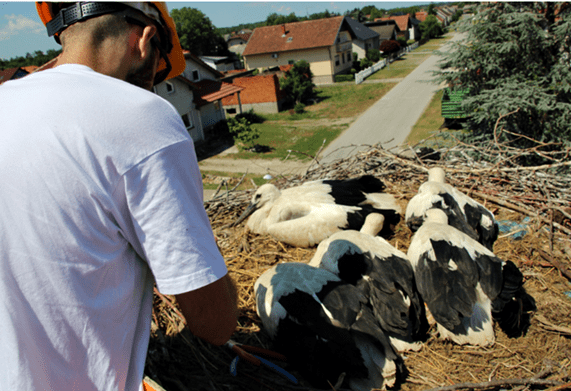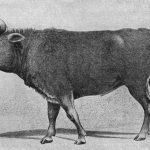The number of juvenile storks climbed to 202 in 2017, twice as many as last year
It looks like the white storks have felt that 2016 and 2017 would be the Years of White Storks – this is a record year when it comes to the number of ringed juveniles.
The number of juvenile storks climbed to 202 in 2017, which is almost twice as many as last year, a spokesperson for Zeleni prsten Zagrebačke županije (“Zagreb County Green Ring”) Public Institution has stated, ZG Magazin reports.
“This has been the fifth consecutive year that ringing has taken place and we have attached a total of 608 rings on juvenile birds.”
There were 69 juveniles in Vrbovec, 49 in Pisarovina, and 49 in Donja Kupčina.

Birds are ringed by attaching a small, individually numbered metal or plastic tag to the leg or wing of a wild bird to enable individual identification. Birds wearing a white plastic ring with a T-marking were born in Croatia.
White storks fly south from their summer breeding grounds in Europe in August and September, heading for Africa. There, they spend the winter in savannah from Kenya and Uganda south to the Cape Province of South Africa. Some diverge westwards into western Sudan and Chad, and may reach Nigeria. In spring, the birds return north; they are recorded from Sudan and Egypt from February to April. They arrive back in Europe around late March and April, after an average journey of 49 days. By comparison, the autumn journey is completed in about 26 days.
Reaching adulthood takes two or three years, so they normally come back to the place where they were born after two or three years. Storks find a partner and try to overtake an existing nest, build a new one, or, if none of the two works, they move on and try to find a nest something else. Some of the storks observed this year came back to where they hatched – a stork from Prilesje (Vrbovec), ringed in 2013, came back to the same village, while another stork, ringed in Poljana (Vrbovec) had to move 25 km to the south, meaning that it is currently living in the village of Guščerovac, Koprivnica-Križevci County.
“Thanks to the process of ringing, we know that our storks spend their winters in the south of Africa, they come back using the eastern migration route (following the Sava and the Danube, they reach the Black Sea, and then fly over Turkey, Lebanon and Israel, until they reach Egypt, where they follow the Nile). Their journey lasts for about two months in one direction. Some of them get hurt if they run into power lines, while others are, unfortunately, illegally persecuted in some Middle East countries, such as Lebanon,” Zeleni prsten spokesperson stated.
Find out more about the rich nature of Zagreb County here.








